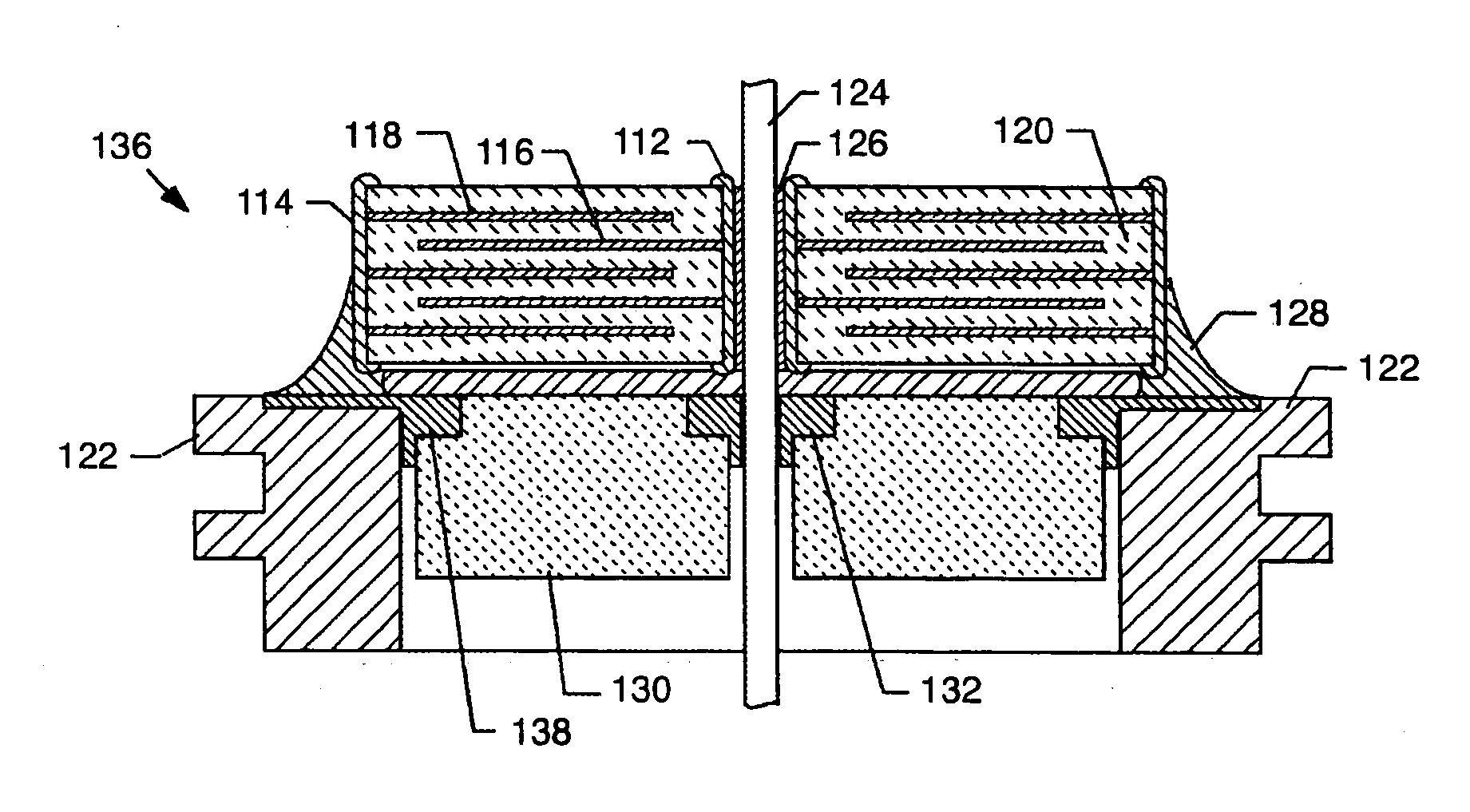EMI filter capacitors designed for direct body fluid exposure
- Summary
- Abstract
- Description
- Claims
- Application Information
AI Technical Summary
Benefits of technology
Problems solved by technology
Method used
Image
Examples
Embodiment Construction
[0093] As shown in the accompanying drawings for purposes of illustration, the present invention resides in EMI filter assemblies which are adapted for direct body fluid exposure without the formation of harmful metal migration, dendritic growth, or whiskers.
[0094] With reference to FIGS. 18-20, a metal can or housing 100 is illustrated which is exemplary of those used to enclose the electronics of an implantable medical device, such as a pacemaker or the like. These electronics typically include a battery, a circuit board, integrated circuits, and a variety of other components and sensors (not shown). In the prior art, as described above, the capacitor is disposed within the housing 100, which is closed, such as by welding, and hermetically sealed to protect all of the interior electronic components from the intrusion of body fluids or other contaminants. Terminal pins or lead wires 102 extend into the housing 100 in insulative relationship with the housing and pass through an EMI...
PUM
 Login to View More
Login to View More Abstract
Description
Claims
Application Information
 Login to View More
Login to View More - R&D
- Intellectual Property
- Life Sciences
- Materials
- Tech Scout
- Unparalleled Data Quality
- Higher Quality Content
- 60% Fewer Hallucinations
Browse by: Latest US Patents, China's latest patents, Technical Efficacy Thesaurus, Application Domain, Technology Topic, Popular Technical Reports.
© 2025 PatSnap. All rights reserved.Legal|Privacy policy|Modern Slavery Act Transparency Statement|Sitemap|About US| Contact US: help@patsnap.com



